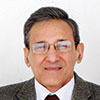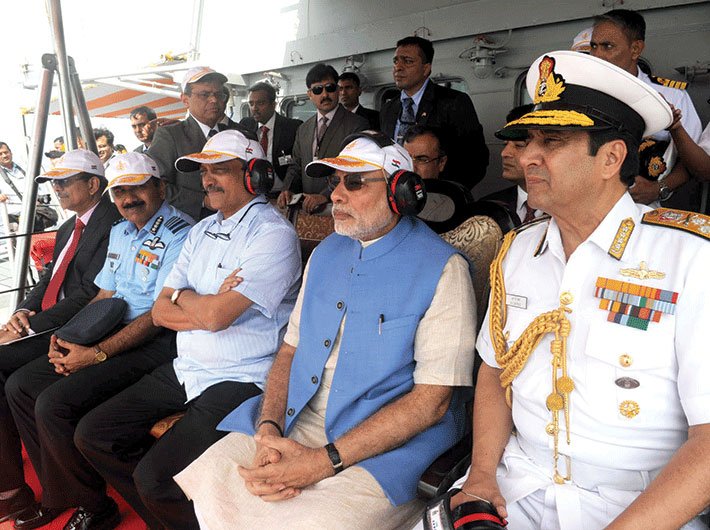Managing the relationship between bureaucrats, diplomats and the armed forces is a delicate affair in a democracy. There’s no scope for ad-hocism, but strict lines can’t be laid down either
Civil-military relations is not a happy phrase because it suggests a basic dichotomy and opposition between the civilian and the military perspectives. Differences in viewpoints give rise to typical controversies in the modern state everywhere. What is different here is the distinction that is sought to be made between “democratic”, “bureaucratic” and “civilian” control.
Continuing controversy between higher military leaders and political leaders and the civilian branches of the government is a feature of the modern state. First, the military leadership typically wants more money, more weapons and more men than political leaders are prepared to allocate; their claim on resources conflicting with the demands of other agencies and groups in society.
Second, military leaders want to have full control over the resources that may be necessary to ensure the security of the state, and place less confidence in diplomacy than political leaders do.
Third, the military also wants precise and explicit definitions of policy to use as the basis of its military plans. At the political level policy has a contingent quality and the art of political leadership frequently lies in blurring commitments.
At the bureaucratic level in all countries the typical controversies involve the allocation of resources. Military leaders tend to ignore the political origins of these concerns. For example, the reported statement of the prime minister to the Combined Commanders Conference in 2014 and 2015 stressed “focus on efficiency and economy in the use of resources”, promoting “jointness across every level of our armed forces”, and that “we have been slow to reform the structures of our armed forces. We should shorten the tooth-to-tail ratio”. Achieving real financial savings to balance the additional needs of the OROP [one rank one pension] within the budget could have been a response of the military.
Military leaders everywhere also erect a defensive wall arguing in the name of morale of the force for more facilities and against attempts to reduce military spending or invoke the authority of specialised knowledge to support their policy recommendations. For example, in periods of rapid change in warfare, it has been the experience in other countries that the military, committed to the truths of another day, lag behind civilians in adjusting military concepts to drastically changed conditions.
Here again, the prime minister has reportedly pointed out to the Combined Commanders Conference that “domination of cyberspace will become increasingly important. Control of space may become as critical as that of land, air and sea. Fullscale wars may become rare, but force will remain an instrument of deterrence and influencing behaviour, and the duration of conflicts will be shorter”. Basing military doctrine on short and sharp conflicts calls for a drastic reallocation within the military budget, of the kind the UK is going through, with possibly lesser requirements of cantonments, fighter squadrons, tanks and attack corps and an enhanced allocation to cyber security from within the budgetary allocation, and begs the question who will do this and why this is not being done.
It is true in all democracies that the minister is assisted by a group of permanent civil servants and appointing military officers in these positions is dysfunctional because inter-agency conflicts and controversies reflect the functionally different roles of the military and other agencies. Inter-agency differences and debates are a normal aspect of modern politics. To assist this process of mediation by political leaders, inter-agency committees are created as forums for consultation, for example, the National Security Council in the US. We should adopt this pattern here as well to give finality to issues.
The real problem will come with the development of an armament industry whose pressures will make it more difficult to reduce military spending and adapting to new requirements, eliminating old weapons and unneeded military facilities. In this area, the annual Combined Commanders Conference should adopt a workshop format to jointly deliberate on emerging military requirements and priorities within budgetary constraints.
Improvement of civil-military relations, in our context, has a focus on pay and perks that have more to do with appeasement than systemic reform, like linking OROP with reducing the tooth-to-tail ratio in the armed forces. Therefore, the suggested solution of integration of the military into the secretariat will be dysfunctional as this step will not lead to resolution of the underlying issue; the ministry provides the policy framework that must be determined by civilian authority.
Three steps need to be taken to meet the evolving needs of national defence.
First, recognise that models that are more appropriate for militaries tasked with global operations are not suitable for countries where the military’s essential task is defence and regional naval presence. The OROP debate has raised the issue of manpower costs and the need to downsize the armed forces and to rely more on ‘jointness’, missiles, special operations and cyber warfare, which are also areas where we have a comparative advantage without relying on costly imports. Naval production is already well advanced to meet the growing needs in this area. The annual Combined Commanders Conference should adopt a workshop format, deliberate on thought pieces and provide joint assessments to the government.
Second, the National Security Council should play a greater role in strategic, policy and even administrative issues to meet the criticism of “bureaucratic” control. Basic questions raised by the prime minister to the military commanders and by them to the prime minister have to contend with the universal problem that militaries everywhere fight to maintain their budgets unrelated to changing needs and solutions lie in interventions of mechanisms directly involved with national security.
Structural reform of the military has not been easy anywhere. For example, in the US, secretary of defence Donald Rumsfeld (1975-77, 2001-06) invited the ire of the military by attempting to reform its structure away from traditional infantry and towards a lighter, faster, more technologically driven force and faced severe criticism from retired military officers. The actions of these officers were considered highly unusual.
Third, the ‘guns and butter’ debate is very much a part of the difference of opinion between the civil and the military. The NITI Aayog has now been tasked with providing a transformative vision for the armed forces and should inject a much needed new perspective.
Fourth, IAS officers should be ‘groomed’ for the responsibility of the defence secretary. Civil service positions with a fixed tenure, of which defence secretary is one, should be open only to officers who have attended relevant courses to keep themselves updated with strategic analysis and have experience of working in the ministry. Officers working in these ministries, as principal adviser to the minister, should be upgraded over other secretaries to provide both the incentive and the recognition of their capability.
Fifth, the military is a special government agency to implement, rather than formulate, policy that requires certain types of physical force. It is
also a prerequisite of a stable democracy with clearly demarcated lines of civilian control. General Douglas MacArthur’s public insistence on the need to expand the Korean War, over the objections of president Harry S Truman, led to the termination of his command. The increasing tendency of retired military officers to comment on civil-military relations is considered unusual in Europe and the US and this convention needs to be adopted here as well.
A new controversy related to functional equivalence of ranks, against the background of OROP, is unnecessary because civil-military interaction is not a one-to-one relationship and involves a multiplicity of interests. The Warrant of Precedence, as the notification specifies, “is meant for State and ceremonial occasions and has no application in the day-to-day business of government”. For nearly 50 years after independence, the district magistrate ranked above a brigadier, and was downgraded by designating the brigadier as a one-star general, setting in motion a chain of modifications which were then applied in the headquarters with day-to-day contact between the military and civil officers. What has worked in the field with occasional contact is not working in the headquarters as two very different structures are sought to be integrated.
Civilian control of the military is a doctrine in military and political science that places responsibility for a country’s strategic decision-making in the hands of the civilian political leadership rather than professional military officers. Different aspects of the relationship should be considered within designated institutions like the National Security Council, NITI Aayog and Combined Commanders Conference instead of considering it as an interaction between the military and the bureaucracy.
Sanwal is a former IAS officer and has served at the United Nations
(The column appears in the December 16-31, 2016 issue)



